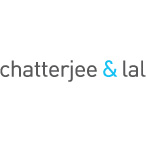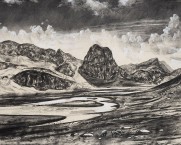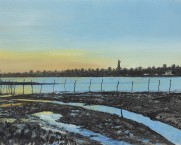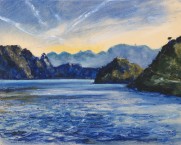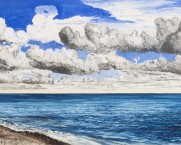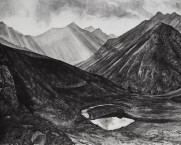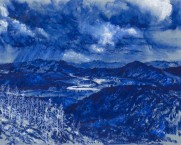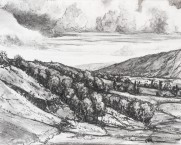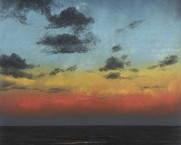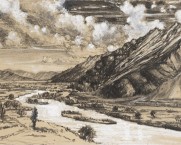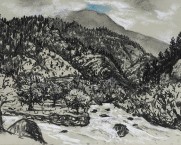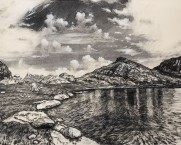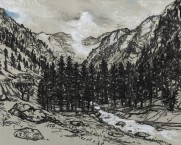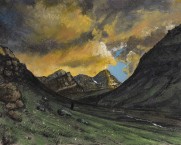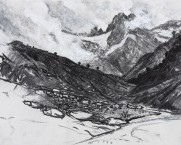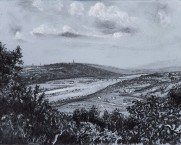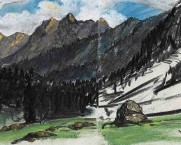C&L Shows
Lands, Waters & Skies
Nikhil Chopra
2018 2019

Overview
This summer I walked 120 km over nine days in Kashmir’s Liddar Valley, looking down onto Pahalgham. 4,000 meters above sea level I looked at – and drank from – pristine high altitude lakes. I had a desire to commune with nature and confront its fragility. I wanted to make drawings in-situ, for instance of Kolahoi Glacier (which has receded 2.3 km since 2003). I wanted to talk to the Gujjars, the Bakkarwals and the Chopwans: nomadic tribes, borderless, who have been grazing their livestock in these remote regions for several thousand years, far away from modern civilization.
As a child, I spent many summers in Pahalgham with my grandparents in their little cottage on the Liddar River. They had to sell their home for a pittance in 1989, when the area became politically troubled. These early formative years of my life were framed within this landscape. Later, as a young backpacker on long treks – sketchbook in hand – I was confronted by the magnitude of the hard mountains and the soft galaxy that gazed upon me. There was a familiar feeling of awe for this landscape and its bounteous enormity. The fragility of the air, of how thin and fleeting it is. In all this, there was a deep desire and love to represent it again and again, to record it all, to connect with that human instinct that is as old as the people who walked these glaciers.
The last six years in Goa have been rewarding. My time has been spent with nature at sea level in the salty humidity of tropical India: through paddy fields or on the beach. As a co-founder and active participant of a collective of artists based in North Goa – the HH Art Spaces – I have collaborated with a diverse range of performance and body-based artists, dancers, and musicians. These invaluable interdisciplinary experiments, performance lab jams and open studio days have expanded my vocabulary and repertoire. Simultaneously, my relationship to studio-based drawing practice has seen a renewed energy, in the quietude of the rhythms and processes of my studio apartment by the river.
Thinking through the body, its rituals and processes, my performances involve the act of creating live drawings, in scales usually larger than the span of my body, and within the limitations of time. I have traveled extensively with my productions. I am excited by the energetic contrast between developing a work in collaboration and, then, being in the immersive and expansive world of the flat picture plane with all its layers of feeling and history that one can access within its very form and object-hood.
The drawings made in my studio often function as rehearsal acts for performances. There is almost a symbiotic and synergetic relationship between both the modes of operation and creation, thinking through drawing but also through the body, time and space. The many drawing performances made in the last six years echo the spirit of travel, transience and nomadism. They engage with landscapes and cityscapes as subjects. They express my love for observation as an active form of engagement with a place. Most of my drawings emerge from this point, as they become the beginning of a dialogue.
The sea has played a crucial role on my body and my imagination. I have spent many years of my life in port towns: Dubai, Bombay, Baltimore, New York City, Bahrain and Kochi. Looking out into the sea at the horizon line has always offered fresh air, respite and a sense of hope. I feel like I am surrounded by water. And now that I live in Goa, the infinite perspective of the sea and the imagination of what’s beyond the horizon line are very connected to my present. I immerse myself in this water, I swim in this water, and I bathe in this water. I have begun to feel like I am of this water.
I want to understand the mysteries of what is up beyond the mountain pass, and down in the depths of the ocean. As forms, they mirror each other as opposing forces: the mountain is something that juts upwards and the ocean is something that plunges downwards. At those moments when the reflection of mountains in water has become viscerally real to me – in Musandam, Oman or Mt. Olympus, Greece – then the corporeality of the act of drawing and making becomes heightened and clear. Then the act of drawing becomes a poetic and political tool for recording, remembering, memorizing and recalling.
